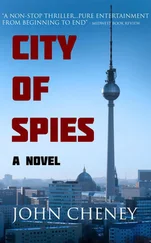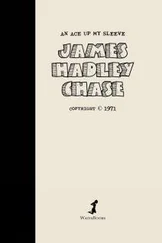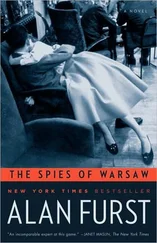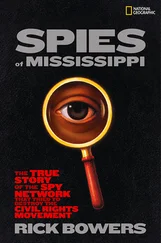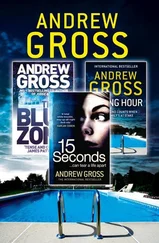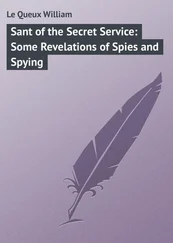12. Reilly’s ‘diary’ is in ‘Trust’ File No. 302330, Vol. 37, p.366 (Central Archives of the Federal Security Service, Moscow).
13. Ibrahim Abisalov, an expert marksman with a pistol.
14. Pepita Reilly.
15. On the assumption that the diary was written for the consumption of Western eyes rather than the OGPU, this piece of bravado is perhaps not surprising. Although obviously not an ‘Englishman’, it is debatable whether he was, in fact, a Christian either. Caryll Houselander clearly regarded him as a fellow Catholic and from the testimony of Eleanor Toye and others we know that he certainly had a keen interest in the Christian religion and Jesus Christ. However, in the absence of any real evidence, his religious beliefs or lack of them must remain conjecture.
16. ‘Trust’ File No. 302330, Vol. 37, p.300 (Central Archives of the Federal Security Service, Moscow). The letter was first published in Moscow in the Literaturnaia gazeta, No. 51, 20 December 1967, p.2.
17. Iron Maze, Gordon Brook-Shepherd, p.301.
18. Secret Assignment. Edward P. Gazur (St Ermins Press, 2001), p.526.
19. Ibid.
20. Ibid.
21. ‘Boris Savinkov pered voennoi kollegiei verkhovnogo suda SSSR, Iron Maze, Gordon Brook- Shepherd, p.276.
22. Mikhail Dmitriyevich Kushner was an OGPU doctor and mortician.
23. Veronal is a diethyl-barbituric acid or barbitone. As a white crystalline powder it would have been given to Reilly by Kushner to induce sleep. As we already know, Reilly was possibly subject to severe headaches and mild epilepsy at times of acute stress. In New York he was apparently consulting Dr Anthony Bassler of 21 West 74th Street, who specialised in such conditions (US Bureau of Investigation/ONI, Memorandum of 9 October 1918, p.4).
24. A reference to the American Consulate’s involvement in the 1918 ‘Lockhart Plot’.
25. A reference to the Soviet’s claim that Reilly was involved in sabotaging food trains at Voronezh in 1918. See ‘Sensational Plot discovered to overthrow Soviet Government’ by Greorgi Chicherin (a handbill distributed to Allied troops in Archangel in August 1918). Reilly had always denied this.
26. Alexei Stark, a former naval Tsarist officer employed by the OGPU.
27. Ilya Kurtz had worked with Reilly in 1918 and Paul Dukes (ST25) in 1919. He is thought to have defected to the Bolsheviks in 1920 and become an OGPU agent.
28. Eduard Opperput, an OGPU agent involved in the ‘Trust’ operation. He defected to the West in Finland with Maria Shultz (Maria Zakharchenko) in April 1927 and disclosed that the Trust was an OGPU sham. He returned to Russia on behalf of anti- Bolshevik forces and was shot by the OGPU in Smolensk in June 1927. Richard Spence argues that his death was a sham and that he was re-recruited by the OGPU and sent to China (Revolutionary Russia, Vol. 8, No. 2, December 1995, p.189, note 38).
29. Alexander Yakushev, the OGPU agent who met Reilly on his arrival in Helsingfors on 22 September 1925.
30. Sir Robert Hodgson was a British diplomat assigned to Moscow in May 1921 by Lord Curzon as head of the British Commercial Mission. In March 1924 he was appointed Britain’s chargé d’affaires by Ramsay MacDonald. The OGPU believed Hodgson’s Commercial Mission was a cover for espionage.
31. Paul Dukes was a musician, civil servant and journalist who served as an SIS agent between 1918 and 1920. Knighted for services in the field, he was a friend of Reilly’s during the 1920s. In 1922 Reilly endeavoured to persuade Dukes to stand in the 15 November General Election as a Conservative candidate (Letter from Sidney Reilly to Paul Dukes, 23 October 1922, Robert Bruce Lockhart Collection, Box 6, Hoover Institution Archives, Stanford, California).
32. Zinovy Peshkov was the adopted son of Maxim Peshkov (Maxim Gorky). He served with the White forces in 1918.
33. A Lycée was a secondary school organised along French lines. Both Christian and foreign, they were objects of suspicion. Jeanne Morans was the headmistress of the Moscow Lycée, a catholic girls’ school, and had been arrested in connection with the Lockhart Plot in September 1918. She was tried but found not guilty.
34. Mikhail Gniloryboff was a member of Boris Savinkov’s People’s Union for the Defence of the Motherland and Liberty.
35. OGPU official working with Dr Kushner.
36. OGPU agent Grigory Feduleev worked undercover on the ‘Trust’ operation and was in on the Reilly interrogation with Vladimir Syrne.
37. It would appear that what Reilly actually told Styrne about SIS was superficial, fabricated or already known to the OGPU, or a combination of all three. Following the breach of diplomatic relations between Britain and Russia in 1927, the OGPU arrested two of Ernest Boyce’s agents and put them on trial for terrorism. The Leningrad Sunday Worker reported on 2 October that, ‘evidence given by the notorious British spy, Capt. Sidney Reilly, in October 1925, was read out during the present trial of terrorists at Leningrad’. Reilly was quoted as declaring, ‘The British secret service – called the Secret Intelligence Service – is an institution standing quite apart from any ministerial department… it is absolutely secret: neither the names of the chief nor staff are known to anyone except the principal cabinet ministers and military chiefs of the highest rank… since 1923 SIS has been headed by Rear-Admiral Gaygout’ (this would appear to be a translation error for ‘Guy Gaunt’). In reality, the chief was Rear-Admiral Sinclair, as Reilly well knew. (A copy of the Sunday Worker article is among the Reilly Papers CX 2616.)
38. Reilly could volunteer nothing here as he was completely unaware of SIS activities since his ties with the organisation were severed in 1921.
39. Norwegian military attaché in Moscow at the time of Reilly’s interrogation.
40. SIS station chief in Prague, Czechoslovakia.
41. Reilly may sincerely have believed that SIS had placed no spies in Russia after Dukes. The OGPU, however, knew differently, thus their reluctance to take no for an answer.
42. Rear-Admiral Thomas Kemp had ordered Reilly’s confinement on HMS Glory following his arrest in Murmansk, due to a passport irregularity, in April 1918.
43. This no doubt refers to the meeting with Lockhart following Reilly’s visit to the Kremlin on 7 May 1918.
44. Artur Artuzov was head of the OGPU’s counter-intelligence section (KRO), and therefore Vladimir Styrne’s immediate superior.
45. The Zinoviev Letter was almost certainly a forgery and the Russians were keen to learn more about the anti-Bolshevik émigrés who were the prime suspects in the eyes of the OGPU.
46. Mikhail Frunze, Bolshevik Commissar for Military and Naval Affairs.
47. Wyndham Childs, Deputy Assistant Commissioner, New Scotland Yard.
48. John Carter, Deputy Assistant Commissioner, New Scotland Yard.
49. Sir Basil Thompson, superintendent, New Scotland Yard (Special Branch).
50. According to Winston Churchill, in a letter to Col. Stewart Menzies of SIS, dated 29 October 1920, ‘the other man whom I should be glad of any information which you can give me is one Boris Said [sic]. I am informed by certain persons that he was the principal Zionist agent in London before the revolution and having in his hands an exceedingly large sum of money he decided to appropriate it and throw in his lot with the Bolsheviks. I am told that he is now the principal Bolshevik agent and lives in style at the Ritz’ (CHAR 16/49/64–66, Churchill Archives Centre, Churchill College, Cambridge).
51. Leonid Krasin was, from 1920, the head of Soviet Russia’s Economic Mission to Britain. Reilly assisted Krasin in securing a trade agreement with Marconi, although it was suspected, but never proved, that both Krasin and Reilly pocketed money from this and other deals.
Читать дальше

